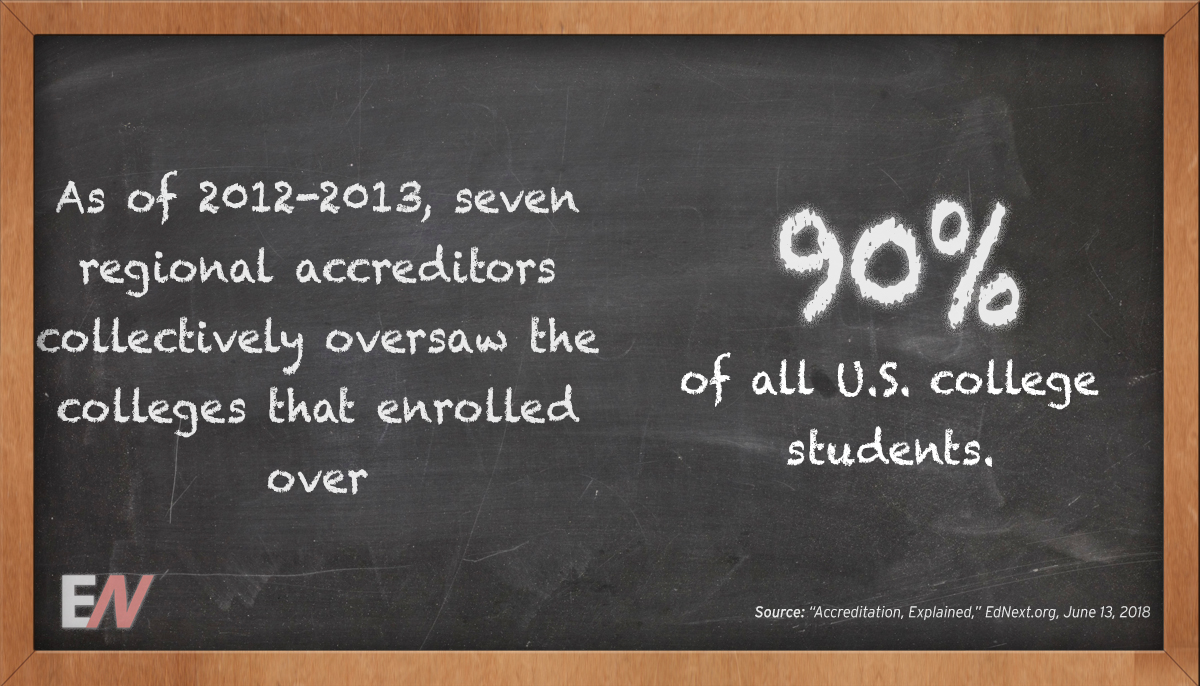
Accreditors are the private, nonprofit trade organizations responsible for accrediting colleges, and attending an accredited institution is what allows postsecondary students to use federal subsidies to pay for their education. As of 2012–2013, seven regional accreditors collectively oversaw nearly 3,000 colleges that enrolled over 90% of all college students in the United States. Today’s major regional accreditors were originally founded in the late 19th century as voluntary college associations—but the Higher Education Acts of 1965 and 1972 turned college accreditors into gatekeepers for billions of dollars of public aid. Though the triad of the federal government, state regulators, and accreditation agencies all play a role, accreditors are the key decision makers. To learn more about how college accreditation works, read “Accreditation, Explained,” EdNext.org’s new guide to college accreditation.
—Education Next


